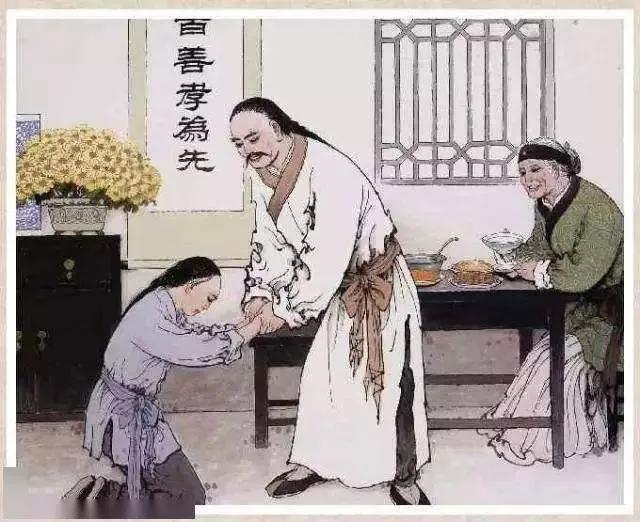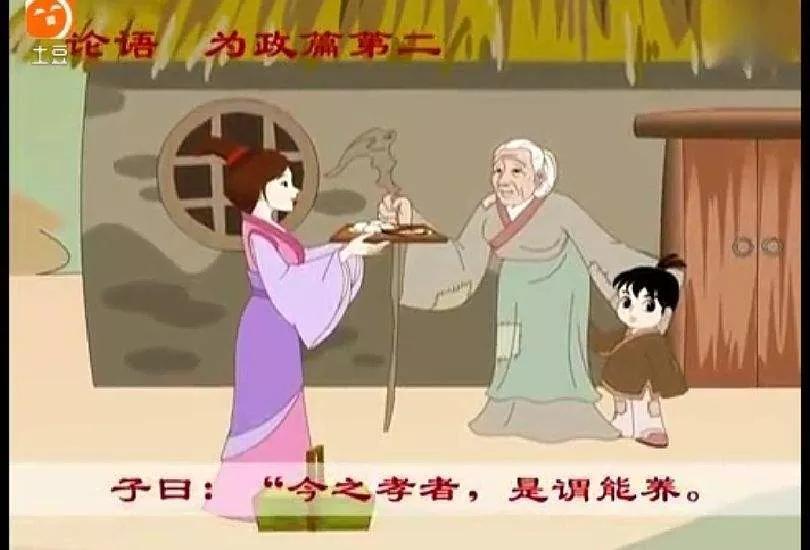《论语》孔子论孝篇2则原文及翻译
Confucius' 2 Articles on Filial Piety in the Analects of Confucius
1、子游问孝。子曰:“今之孝者,是谓能养。至于犬马,皆能有养,不敬,何以别乎?”【辜鸿铭英译】
A disciple of Confucius asked him the same question as the above. Confucius answered! “The duty for a good son nowadays means only to be able to support his parents. But you also keep your dogs and horse alive. If there is no feeling of love and respect, where is the difference?”

【白话】子游问怎样做为孝。孔子说:"今天许多人把孝单纯理解为赡养父母。狗和马不也有人养吗,如果不尊敬父母,与养狗养马有什么不同呢?"
【Vernacular】Ziyou asked how to be filial. Confucius said, "Many people today understand filial piety simply as supporting one's parents. Aren't dogs and horses also owned, and if parents are not respected, what is the difference between raising dogs and horses.

2、子夏问孝。子曰:“色难。有事,弟子服其劳;有酒食,先生馔,曾是以为孝乎?”【辜鸿铭英译】
Another disciple asked the same question. Confucius answered! “The difficulty is with the expression of your look.That merely when anything is to be done the young people do it, and when there is food and wine the old folk are allowed to enjoy it! —do you think that is the whole duty of a good son?”
【白话】子夏问什么是孝道,孔子说:”在父母面前,始终和颜悦色很难。有事情,年轻人去帮着做,有了酒饭,让长辈吃,难道这样就是孝吗?”
Zi Xia asked what filial piety was, and Confucius said, "In front of your parents, it is difficult to always be pleasant. If there are things, young people will help to do it, and if there is wine and rice, let the elders eat it, is this filial piety.
馔:zhuàn,给吃喝。

-
强力保险箱全国售后服务电话24小时人工服务热线售后服务体系——以专业守护您的资产安全.强力保险箱全国售后服务电话24小时人工服务热线客服全国售后服务点热线400-605-8619一、强力保险箱全国售后服务电话24小时人工服务热线全周期保修服务标准保修政策新品购买后提供3年整机免[详细]
-
杰宝大王保险柜售后服务全国热线故障预约电话故障原因及使用维护指南杰宝大王保险柜售后服务全国热线故障预约电话作为存放贵重物品的重要工具,其稳定性和安全性直接影响用户财产安全。然而,长期使用中可能出现故障,影响正常使用。本文将从常见故障原因、使用技巧及售后服务三方面展开分析,帮助用户延长杰宝大[详细]
-
恒发保险柜全国24小时售后维修服务电话售后服务与故障维修全指南恒发保险柜全国24小时售后维修服务电话作为财产安全的重要保障工具,其售后服务与故障维修服务直接影响用户的使用体验和财产安全。恒发保险柜全国24小时售后维修服务电话服务内容、维修流程及售后服务的核心要点。恒发保险柜全国24小时[详细]
-
彩月保险箱售后电话全国服务24小时400人工客服热线售后维修服务指南及常见故障解决方案彩月保险箱售后电话全国服务24小时400人工客服热线全国各售后服务电话400-605-8619一、彩月保险箱售后电话全国服务24小时400人工客服热线售后维修服务流程服务预约彩月保险箱售后电话[详细]
-
《新宝塔保险箱全国各售后服务热线号码故障处理与售后服务指南》,采用模块化结构便于阅读:新宝塔保险箱全国各售后服务热线号码售后网点全国各市售后服务电话400-605-8619一、新宝塔保险箱全国各售后服务热线号码常见故障类型解析无法正常开启原因:密码错误次数超限/电路板故障/机械[详细]

